Are you a history buff looking to make the most of your time in the historically significant landscape that is Cornwall? Well, you’ve come to the right place!
There are many castles in Cornwall, each offering something different to the rest.
Think ancient ruins, dramatic cliff faces, world-renowned gardens, impeccably preserved fortresses, sandy beaches, educational opportunities– and much more.
In this article, we’re going to cover a handful of the best castles in Cornwall to visit, delving into their history and unique features.
So come with us as we go on a deep dive into the castles of Cornwall!
Why Does Cornwall Have So Many Castles?
Due to its mild and agreeable climate, Cornwall has a history of prosperous agriculture, society and culture.
While Cornwall itself has been around since the Paleolithic, occupation didn’t fully begin until just after the last ice age (roughly 10,000 years ago).
However, it’s Cornwall’s placement at the Southwest tip of England that has made it a significant location throughout history.
This particular placement led to high trade with various European countries, and a higher risk of attempted invasion due to its convenient proximity.
These two factors resulted in a large number of Cornwall castles through the ages, as castles were often used as defensive structures and artillery fortresses in order to protect against invaders.

While several of these castles were built as defence keeps in the earlier parts of history, some were even used in World War Two to defend against German aircrafts!
With that, let’s now take a look at some of the castles that you don’t want to miss…
Pendennis Castle
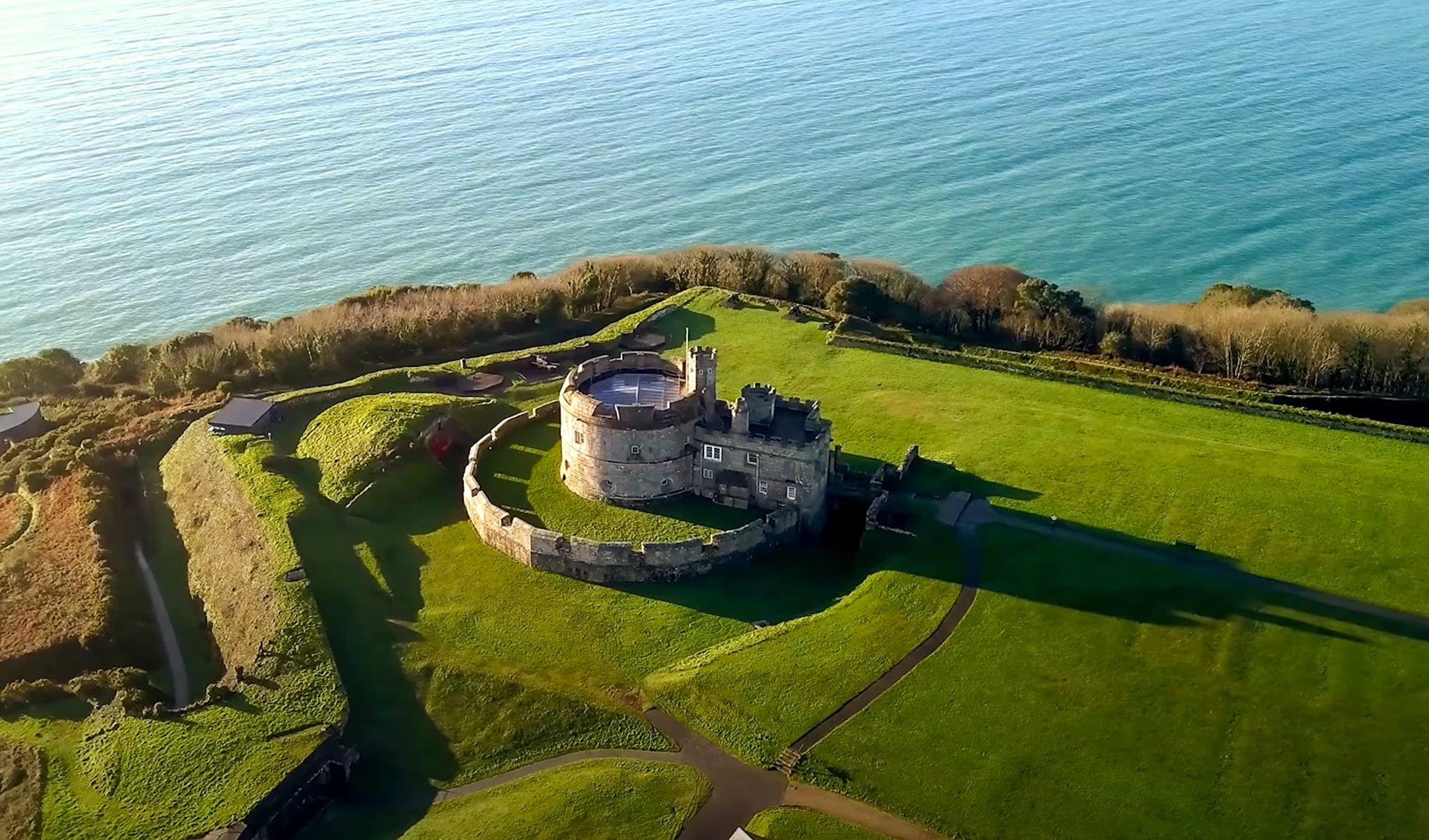
Pendennis Castle is a Cornish castle built as an artillery fortress by Henry VIII in the 1500s.
You’ll find it situated on the Far Estuary, across from St Mawes Castle. This isn’t a coincidence, however, as both Pendennis and St Mawes were strategically placed to defend the mouth of the river Fal.
The circular structure is classic of the time period, and the castle was designed as a simple round-keep castle (which was later further developed as a military asset). These developments included new weaponry, new fortifications, barracks and more.
Pendennis Castle was militarily active during the Napoleonic Wars as an important supply base for the British Army. The castle was also active through World War One and World War Two — during the latter, it even saw action with a German aircraft!
Inside the castle is a display of an array of guns, and is especially well-maintained and restored– offering a special look to the public into times past.
In fact, it is so well preserved that Pendennis is considered to be “one of the finest examples of a post-medieval defensive promontory fort in the country”.
Pendennis these days, however, plays host to a variety of community events, and is a very family-friendly space especially during the school holidays.
If you’re a history buff, you may be interested in reading the letters written by soldier John Glasson Thomas, who was posted at Pendennis for 15 months in 1916.
These letters can be found on the English Heritage website, and contains excerpts detailing how he felt while residing at Pendennis Castle:
“War! No one except those who participate can realise the conditions… Of course we took up our first position in the dark… Guns were booming all around us — the sky was vivid with the flashes, and the noise!”
Caerhays Castle and Gardens
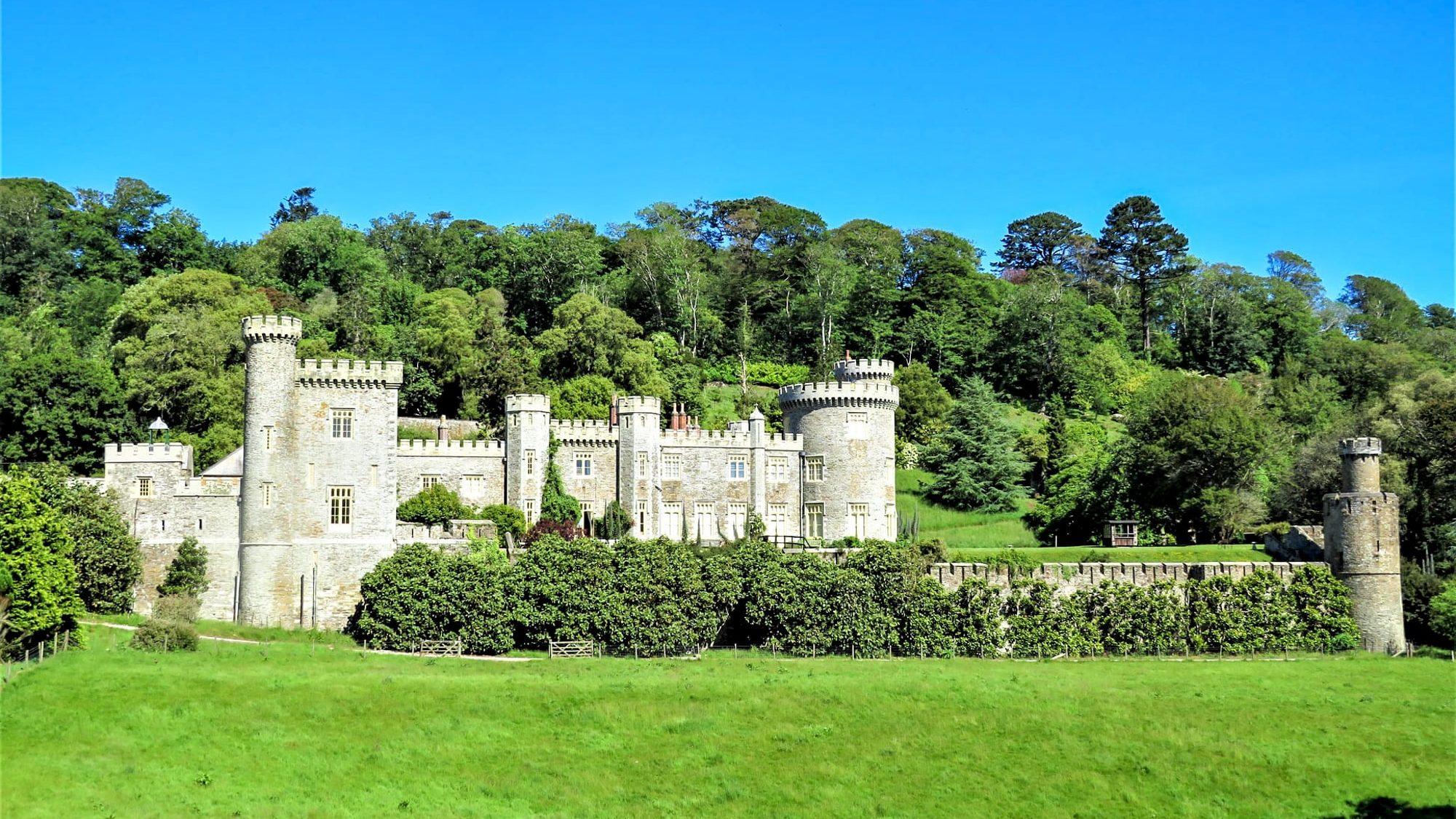
Caerhays Castle and Gardens sits impressively just outside St Michael Caerhays, a civil parish and village in Cornwall.
Caerhays Castle was one of the last built in Cornwall, and never served a function besides being an architectural feat.
The grounds were originally home to an impressive manor. In the early 1800s, members of the Trevanion family (who had inherited the grounds) hired an architect to build the castle structure.
Interestingly enough, the Trevanion family went bankrupt after the renovations, and the newly-built castle and manor were sold to the Williams family.
Though much of the original manor has been renovated, some original parts remain intact– such as the remains of the ancient chapel.
The Williams family still own and occupy the grounds to this day. Luckily, even though this Cornish castle is currently occupied, there are guided tours you can take around the castle from mid-March to mid-June.
You can find up-to-date schedules and further details on their website. Bookings can and should be made in advance through their website.
Besides an interesting history, the Caerhays Castle and grounds boast a world-famous Magnolia Collection, with over 450 types of Magnolias on the grounds. The Magnolias alone bring many visitors to the grounds, especially in the springtime.
The Castle grounds are also home to over 250 types of rhododendron, so a spring visit is certainly recommended!
That’s not to mention the sheer impressiveness of the castle’s 140 acres of garden, complete with woodland trails and a breathtaking beach.
St Mawes Castle
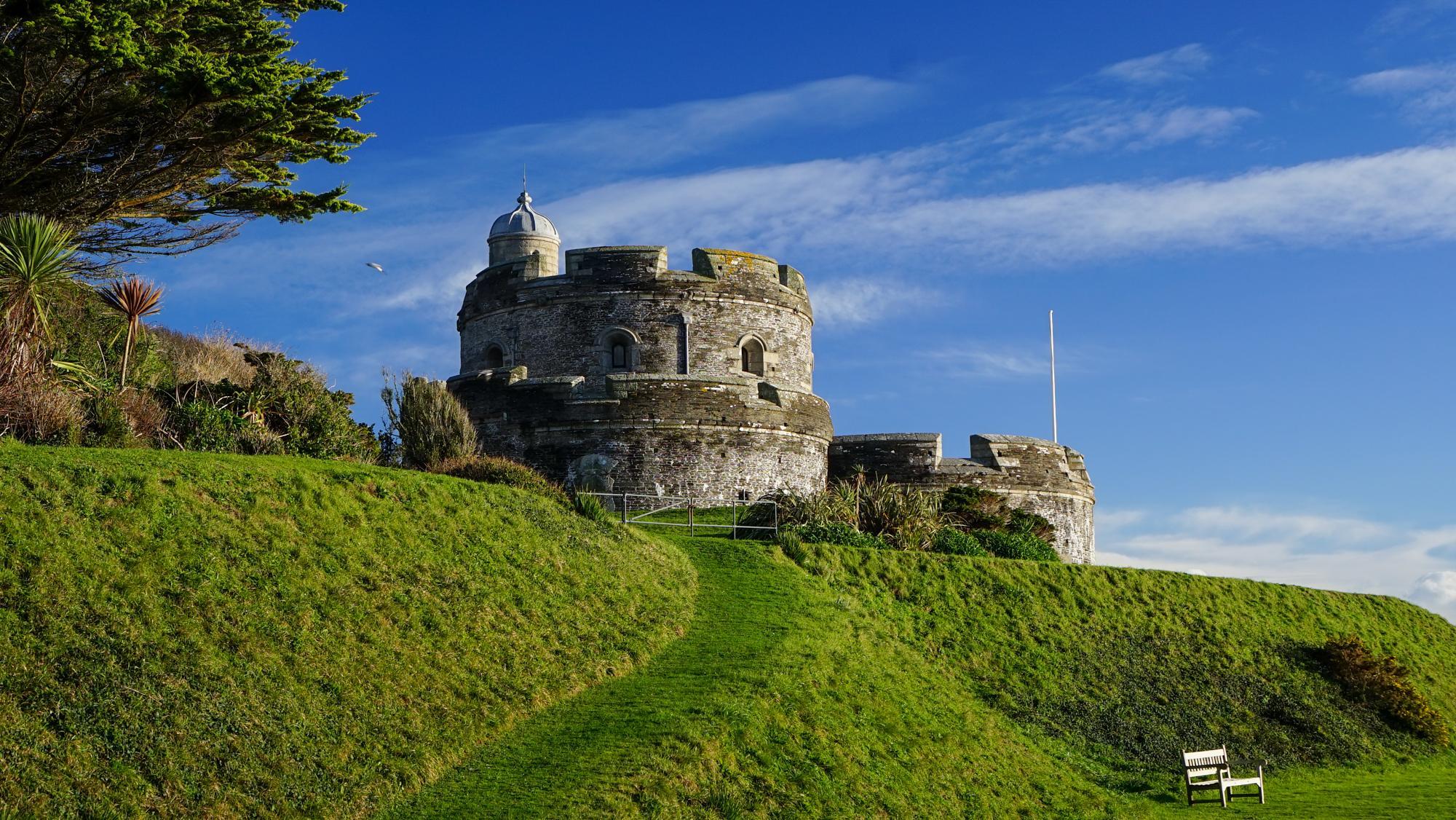
St Mawes Castle is another Cornish castle built by Henry VIII as an artillery fort in the 1500s, in response to fears of an invasion by France and the Holy Roman Empire.
St Mawes Castle isn’t far from the town of Falmouth, and was defensively situated to protect the mouth of the River Fal.
Described as “arguably the most perfect survivor of all Henry’s forts,” St Mawes Castle is still ordained with carved decorations from the 1600s and is steeped in a deep and tangible history.
Now a heritage site, St Mawes Castle is open to the public — complete with exhibits describing its fascinating history.
As a bonus, the views from St Mawes Castle are breathtaking. Plus, the grounds are covered with inviting benches and swathes of green grass for you to relax and enjoy the scenery.
Restormel Castle
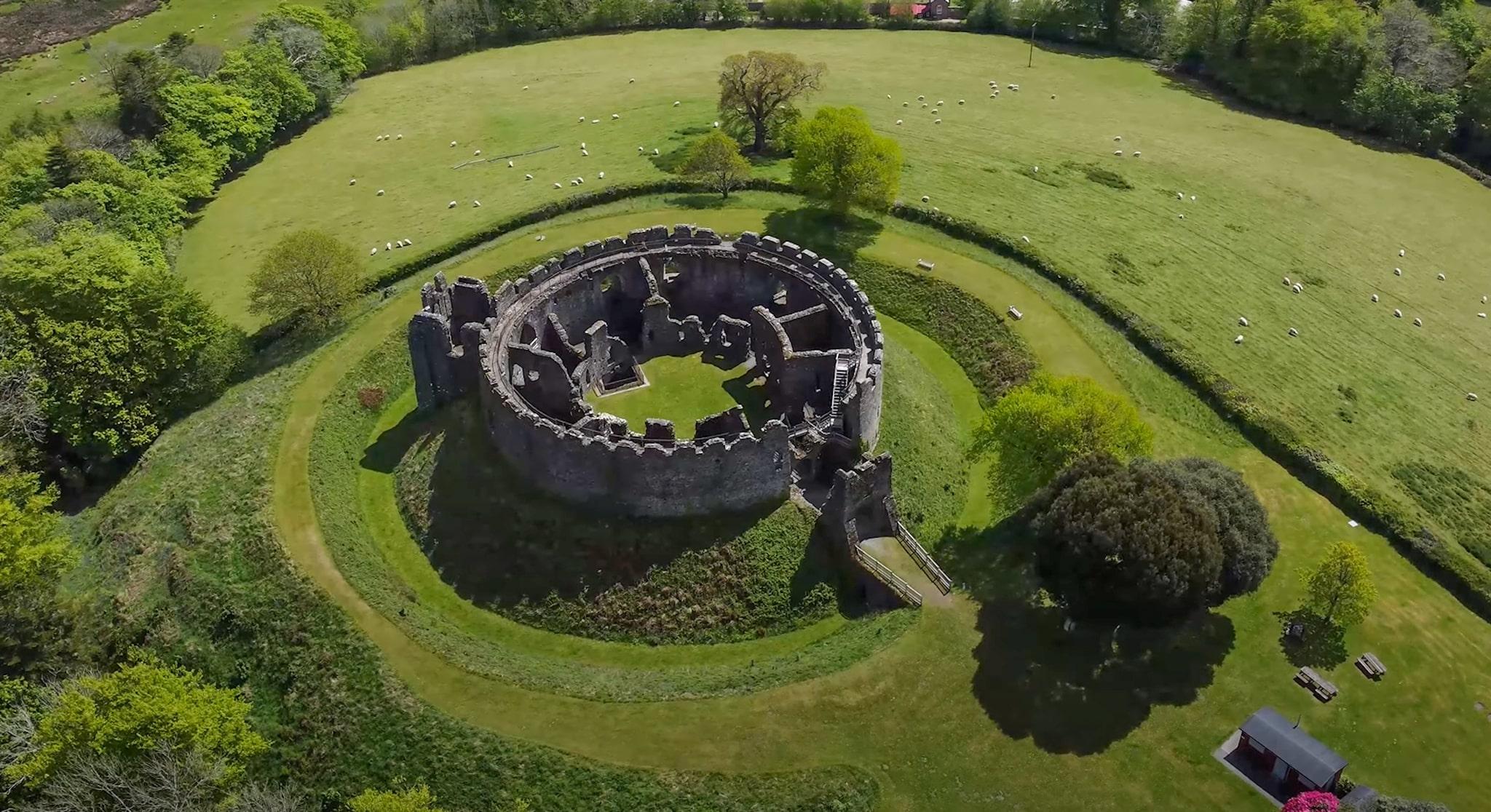
The next Cornish castle you’ve got to see is the astonishing Restormel Castle, located close to Lostwithiel.
Restormel Castle is an incredibly well preserved example of the ‘shell keep’ style castle, boasting a magnificent circular structure.
This style was developed to strengthen the motte-and-bailey castle design. Often, the shell keep was simply built on top of the existing motte castle wooden keep.
Built during the 12th century, Restormel Castle was positioned to overlook the primary crossing point over the River Fowey which was a key tactical location.
The castle was once the residence of the Earl of Cornwall and has been a strategically significant castle throughout history — much of which you can read about if you choose to visit the site.
These days the grounds are maintained by English Heritage, and Restormel Castle is a popular tourist destination and picnic spot for locals and tourists alike.
If you fancy a day walk, there’s a lovely walking trail that takes you from the castle to the Duchy of Cornwall Nursery. This is also a great place to birdwatch, so be sure to keep a close eye out!
Launceston Castle
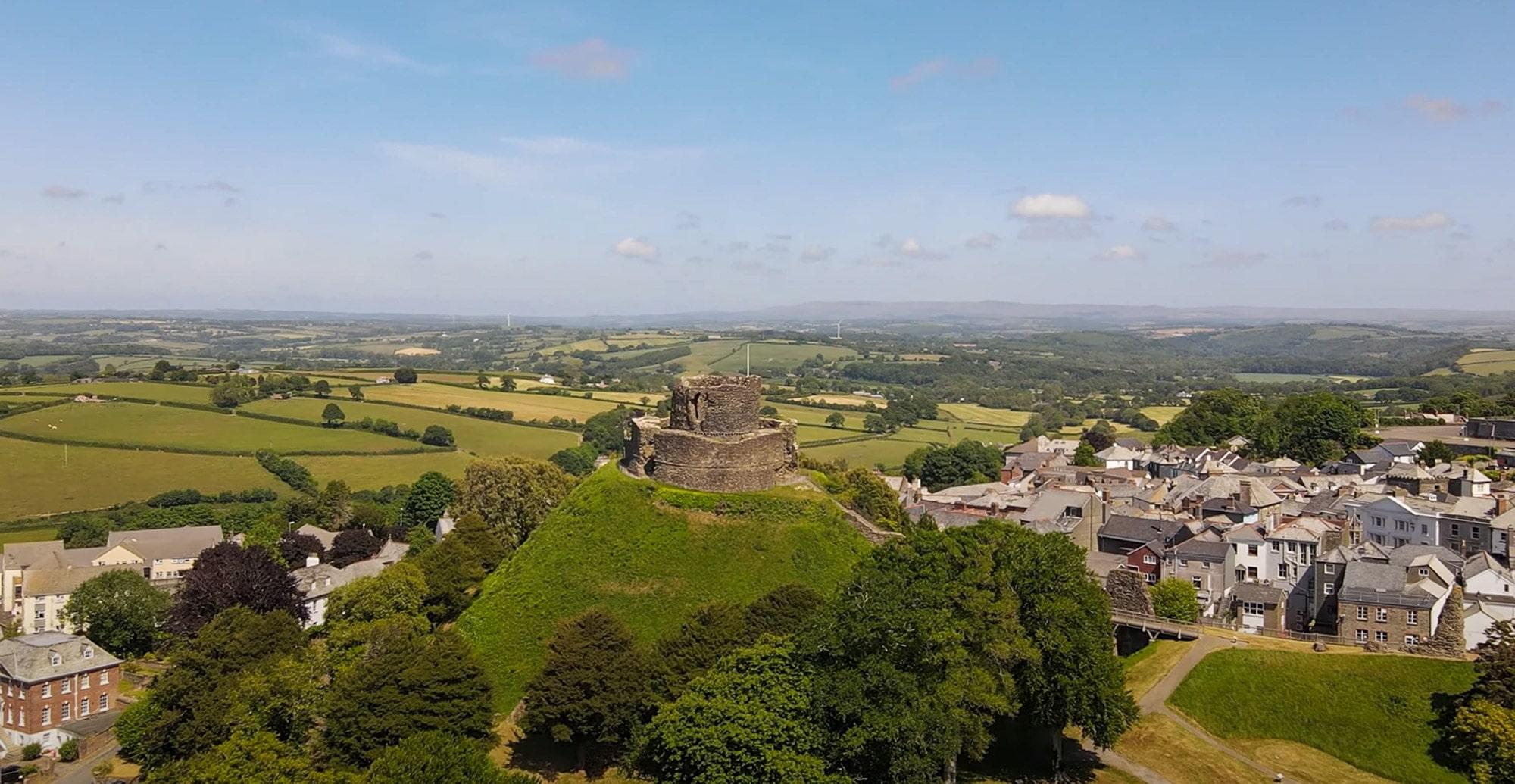
Launceston Castle is another famous castle in Cornwall, located in the town of Launceston — which was, at one time, the capital of Cornwall.
Set atop a natural grassy mound, Launceston Castle has impressive views of the town below. However, it’s this particular location that dictated its placement.
After the Norman conquest of England in the mid 11th century, Launceston Castle was built. The hill upon which it sits was of strategic interest, affording full views and therefore control over vital areas around Cornwall.
It’s theorised to have been built by Robert, Count of Mortain, who had been appointed Earl of Cornwall by William the Conqueror.
Launceston Castle has a rich history, and served as the centre for the Cornish earldom and aristocracy through the 13th and 14th centuries.
After a somewhat wealthy and powerful couple of centuries, the castle eventually became known by the nickname “Castle Terrible” due to its treatment of Cornish rebels in a rather more morbid turn of affairs. During this time, the castle was used as a courthouse and a prison.
Despite its bloody past, the castle is a public space today, regularly hosting events and picnics. The site is well-maintained, full of history and well worth the short walk up.
St Catherine’s Castle
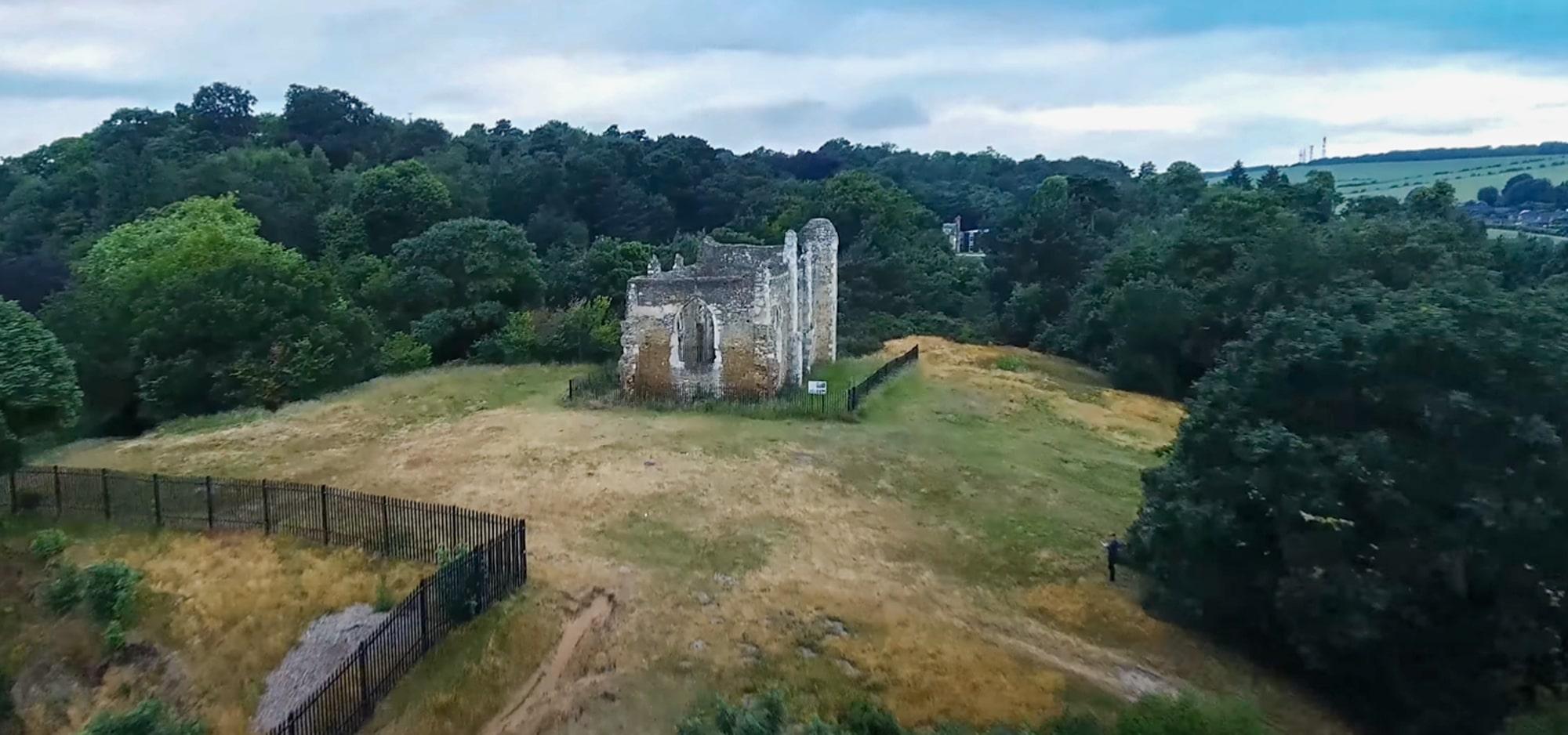
Not far from Restormel Castle is St Catherine’s Castle. St Catherine’s castle offers views of the Fowey estuary, and was strategically placed to defend it.
St. Catherine’s Castle was originally an artillery fort, built in the 1500s by Henry VIII when an invasion by the French and the Holy Roman Empire was feared.
During the Crimean and Second World Wars, the Castle was also used and upgraded militarily. After World War Two, the castle was restored to its pre-war condition.
St Catherine’s castle is often hailed as a prime example of how far military technology and architecture developed over 400 years, as it was continually upgraded and kept in use for all those years.
The castle is now a free entry tourist attraction, managed by English Heritage. Its placement on the cliff gives dramatic views of the ocean below and you can see down to Readymoney Cove Beach, a popular spot for swimming.
St Michael’s Mount

St Michael’s Mount is an architectural masterpiece.
The seemingly never-ending castle sits atop St Michael’s Mount, a tidal island linked to the town Marazion; think high stone walls, turrets, secret rooms, dramatic cliff faces, and exotic gardens.
In fact, St Michael’s Mount’s mediaeval castle is so dramatic and perfect in its preservation, that it was featured in the ‘Game of Thrones’ prequel ‘House of the Dragon’.
One Reddit user described the castle as, “Aesthetically perfect. While every castle has its own unique charm, this one is utter perfection.”
The St Aubyn family have owned and occupied the St Michael’s Mount castle since the 1600s. Even though the castle is occupied, some rooms are open during tours, so you can view the impressive renovations, interior design, and period artefacts.
Since the Castle is on an island, you’ll need to plan ahead carefully.
At low tide, a walkway appears and you can walk across from Marazion. However, at high tide, you’ll need to take a boat in order to reach the island!
The castle’s official website always has up-to-date information on tides, and your pre-purchased ticket will either be a walking or boating ticket.
Tintagel Castle
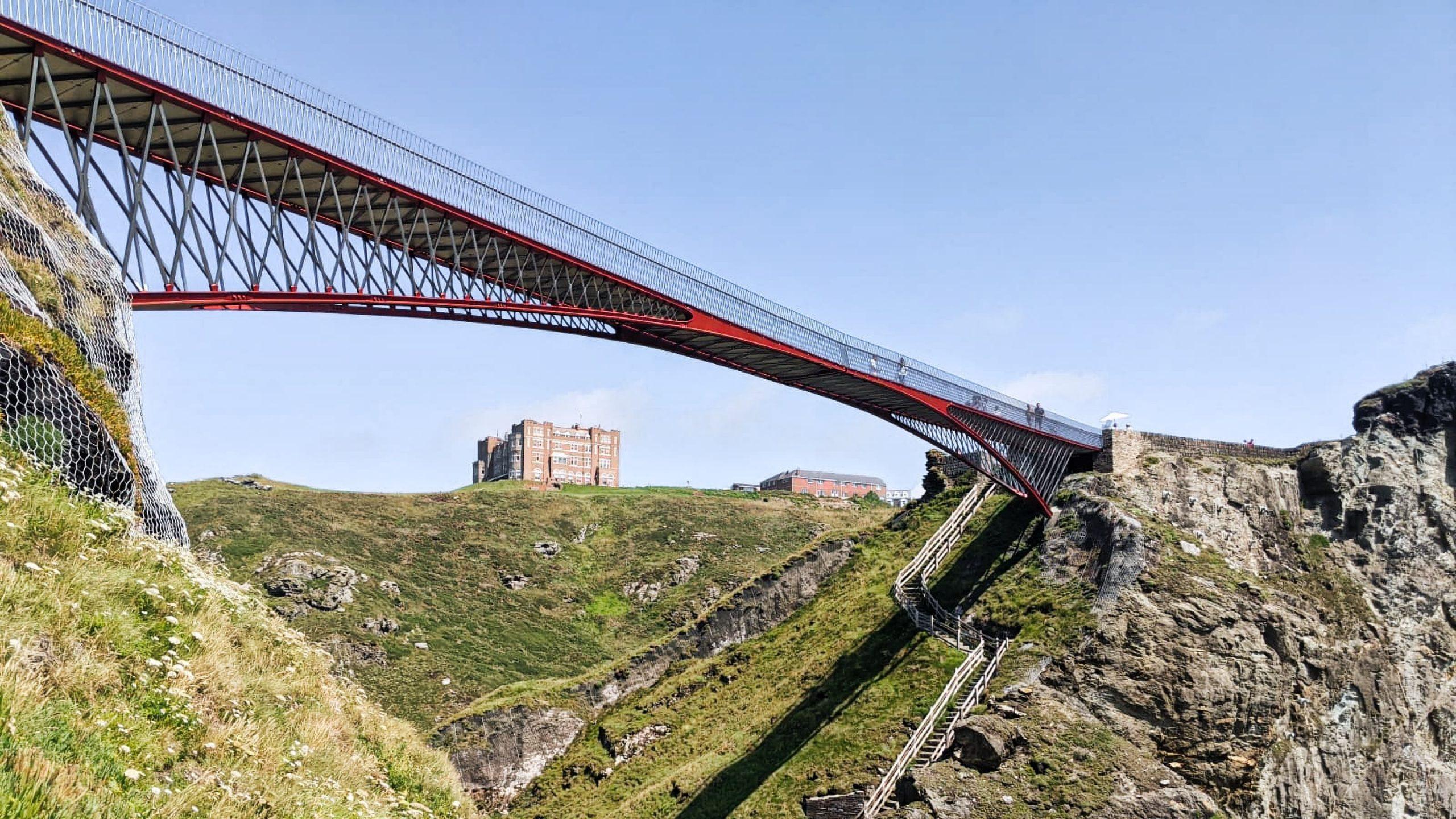
Tintagel Castle is a mysterious and intriguing place. Located by Tintagel in North Cornwall, both the castle and its natural surroundings are stunning.
Legend and lore surround our understanding of the original origins of the castle — some even say King Arthur was born there! While today the castle is mostly ruins and structural remains, it’s clear to see that Tintagel was once a magnificent castle.
The current ruins date from the 1200s, but artefacts found on the site date back to as early as the 5th century. This indicates that Tintagel Castle likely has a much longer history than originally believed.
Surrounded by deep blue ocean, jagged rocks and crashing white waves, a bridge connects one section of the castle to another. Truly, it’s a stunning place to visit and one you should definitely put on your list while in Cornwall.
You’ll find Tintagel Haven and Merlin’s Cave close by, as well as the Beach Café (a two minute walk away). Why not drop in for a cuppa and a bite to eat, while you take in all that the area has to offer.
Make a day of visiting the Cornish castles near you
While this list is in no way exhaustive, hopefully it has provided you with some inspiration for planning a trip to one (or many) of the castles in Cornwall.
There is so much to learn from the area, thanks to its historical significance.
Besides, taking the time to tour through a castle is the perfect way to appreciate and learn Cornwall’s history. If the weather’s playing ball, you can even enjoy a picnic on most of the grounds!
English Heritage has the responsibility of managing many of the castles in Cornwall and around the country, and they do a wonderful job of keeping the grounds in great condition for visitors like you to enjoy.
Additionally, there are always exhibits and signs detailing the history so you can learn as you view.
So, why not make a day of visiting the Cornish castles near you? Just don’t forget your picnic basket or camera!

Introducing Eliot, the Editor here and Cornwall local with a wanderlust spirit and an insatiable appetite for adventure. With a passion for the great outdoors, he can often be found catching waves on his surfboard, scaling peaks on a hiking trail, or discovering hidden gems in his exploration of Cornwall.
